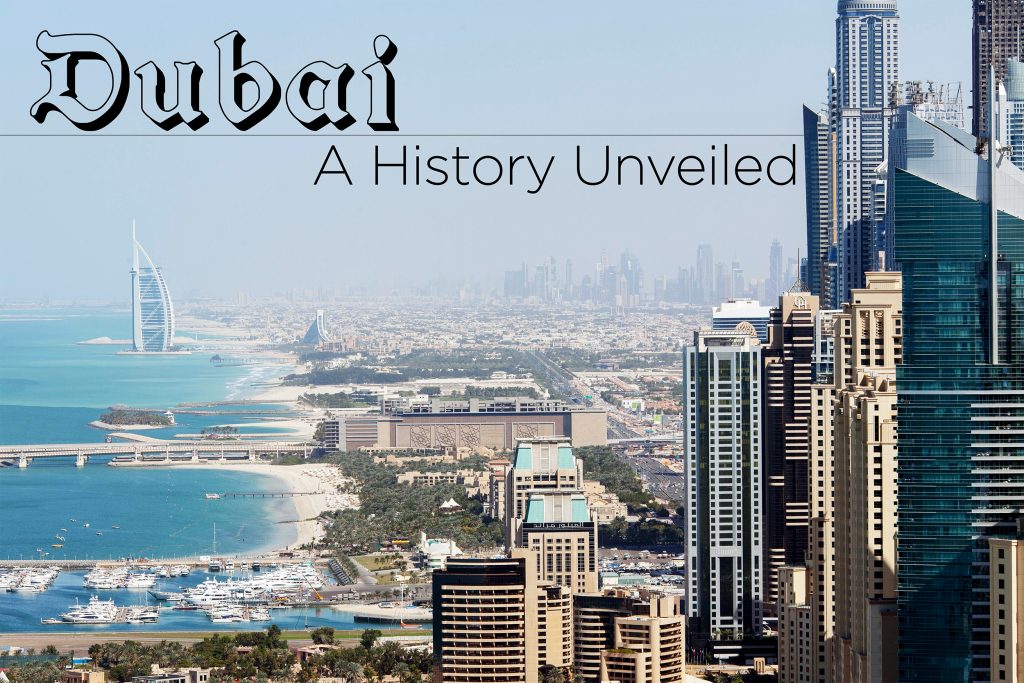
By Arwa Nakara
A world-class tourist destination known for its innovative architecture, spectacular amusements and luxury resorts, Dubai’s rich, native culture is often overshadowed by the glitz of its contemporary facade. Yet, it is the humble beginnings of this prosperous Emirate that lends Dubai its unique flavor.
It was with the discovery of oil in 1966, along with the visionary leadership of Sheikh Rashid bin Saeed Al Maktoum, that Dubai’s meteoric rise began. Nevertheless, the emirate has carefully preserved markers of its past, most commonly seen along both banks of the Dubai Creek. To the north, Deira and its bustling markets beckon to the curious traveler. An invaluable resource, the Creek is where Dubai originally took root as a pearling, fishing and trade port; it’s wind-swept teal waters still plied by colorful boats.
Here’s a list of must-visit historic sites along the Creek that unveil a very different side of Dubai.
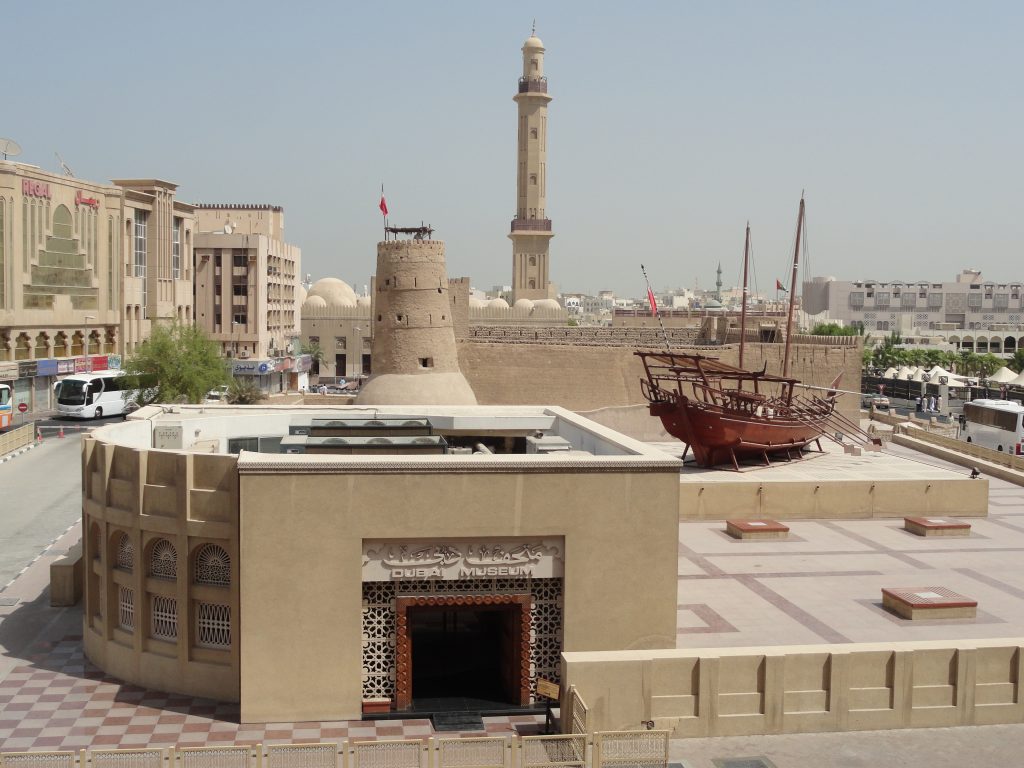
The Dubai Museum is located inside Al Fahidi Fort near a traditional dhow boat. (Source: Fabio Achilli)
Al Fahidi Fort and Dubai Museum
A visit to the Dubai Museum is the ideal place to begin your journey into the past. Located on the south bank of the Creek, Al Fahidi Fort is Dubai’s oldest extant building. Constructed in
1787, it now houses the Dubai Museum and its exhibits. Surrounded by stone and mortar
walls, traditional fishing and pearling boats are on display alongside various artifacts that
chronicle life in Dubai before the discovery of oil nearby. A pathway leads into the museum’s
labyrinthine galleries where the sights and sounds of old Dubai have been faithfully recreated.
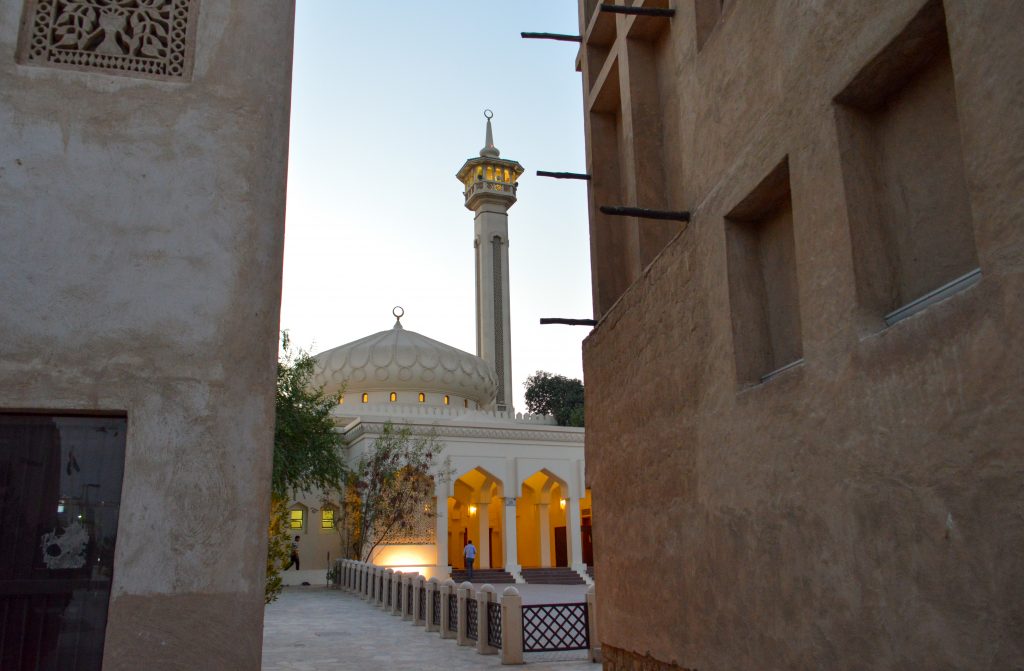
A mosque appears between the narrow alleyways of the Al Fahidi Historical Neighborhood. (Source: Francisco Anzola)
Al Fahidi Historical Neighborhood
Built between 1950-1970, this charming neighborhood is a world unto itself; its narrow alleys
and sunny plazas shielded from the clamor of the modern world just beyond. Traditional wind
towers peak above the roofs – an ingenious and effective solution to the searing summer
heat. Clustered together, these buildings speak of a culture that valued both privacy and
community spirit. Today, this piece of local heritage has been given over to cultural and artistic pursuits and houses several museums, art galleries, souvenir shops and cafes.
The neighborhood’s many tenants include the Sheikh Mohammed bin Rashid Centre for Cultural Understanding that offers guided tours of the neighborhood, the Coffee Museum, and the Coin Museum among others. The XVA Art Cafe and Gallery are especially popular and a great place to browse contemporary art and savor a light lunch in a leafy courtyard. Also preserved here is a small section of the original Wall of Dubai.
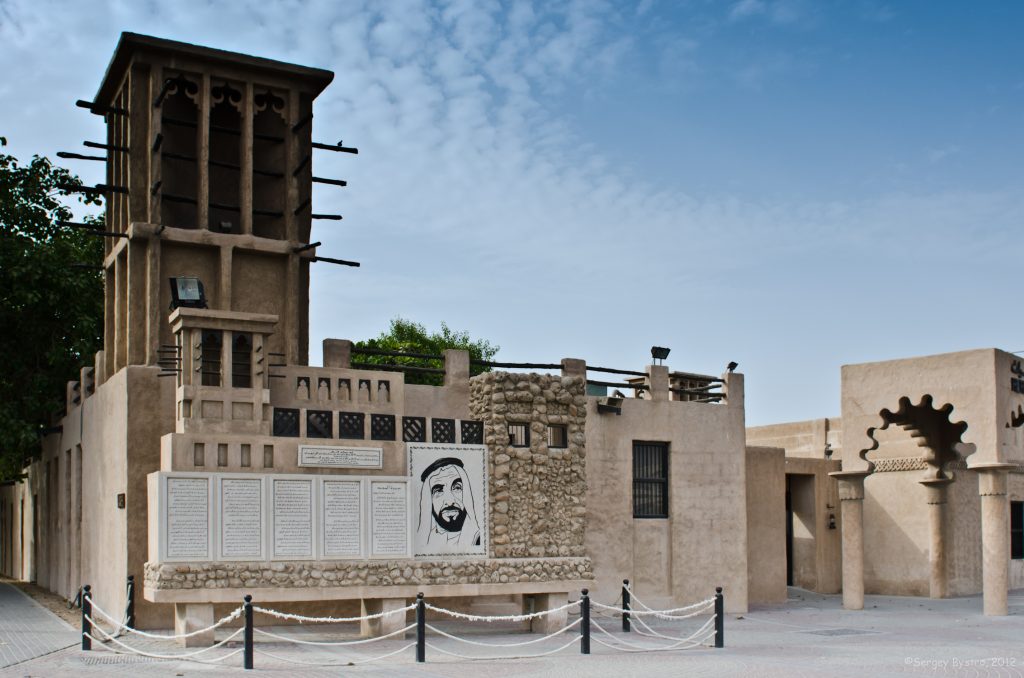
The Saeed Al Maktoum House provides a fascinating glimpse into the world of Dubai royalty. (Source: Serge Bystro)
From here, hail a cab or stroll along the creek to the next destination on our list – the Shindagha Heritage District. Along the way, you’ll pass lively markets, the Grand Mosque and the Ruler’s Court. Situated near the mouth of Creek, this is one of Dubai’s oldest quarters. Here too, traditional architecture weaves an enchanting tableau of the emirate’s illustrious
past. At the Saruq Al-Hadid Archaeological Museum, you’ll encounter one of Dubai’s most exciting archaeological discoveries. Built in 1928, the museum’s home was once the property of
Sheikh Juma bin Maktoum Al Maktoum and is considered by many to be one of Dubai’s most
splendid examples of regional architecture.
A little further away stands the House of Sheikh Saeed Al Maktoum that served as a royal
residence until 1958. The spacious abode is now a museum that displays rare artifacts,
historic photographs and varied memorabilia that highlight the striking changes in the local
lifestyle over the past few decades.
To experience the customs and culture of Dubai first hand, head to the Heritage and Diving Village where you can observe artisans at work, enjoy folk music and dance, and be amazed
by pearl diving, shipbuilding and other maritime demonstrations.
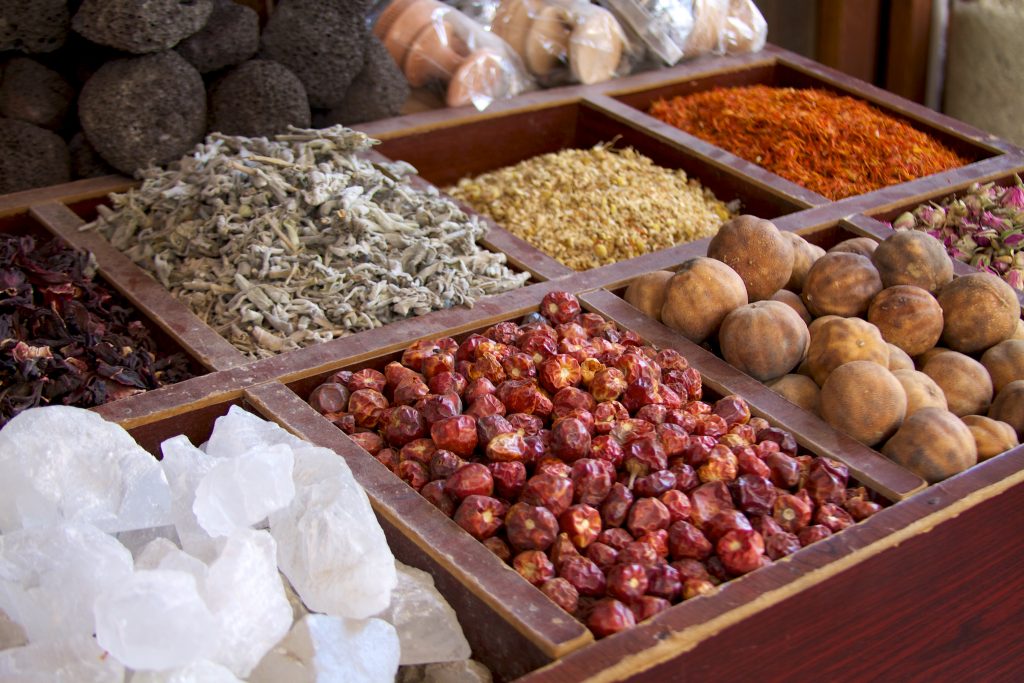
The smell of spices fills the air when walking through the souks of Deira. (Source: McKay Savage)
Al Ras, Deira
Head across the Creek to continue your journey of discovery. The first thing you will
encounter is the Old Spice Souk that beckons with its medley of delicious aromas. Cool off
with a fresh fruit juice from a street-side stall before diving in. Down this warren of winding
streets you’ll find everything from fresh herbs and common spices to lavender buds and rose
petals, the finest saffron, rock salt, and other exotic condiments stacked in piles. Venture
deeper and the spice stalls give way to the glittering Gold Souk where each storefront
displays delicate ornaments alongside lavish jewels fit for a queen.
But there’s much to Al Ras besides its markets. Here, you will also find the former home and museum of the Poet Al Oqaili. The Al Ahmadiya School is another popular historic site on this side of the Creek, and offers a rare glimpse into the development of education in Dubai. With shopping bags full of treats, round-off your visit with a dinner cruise down the Creek and admire the twinkling lights of Dubai.
Nice
Great details of the heritage history of Dubai have visited the site and experienced the same waiting for some more heritage tour of the area
It is a very good article on Dubai …N Good Info too